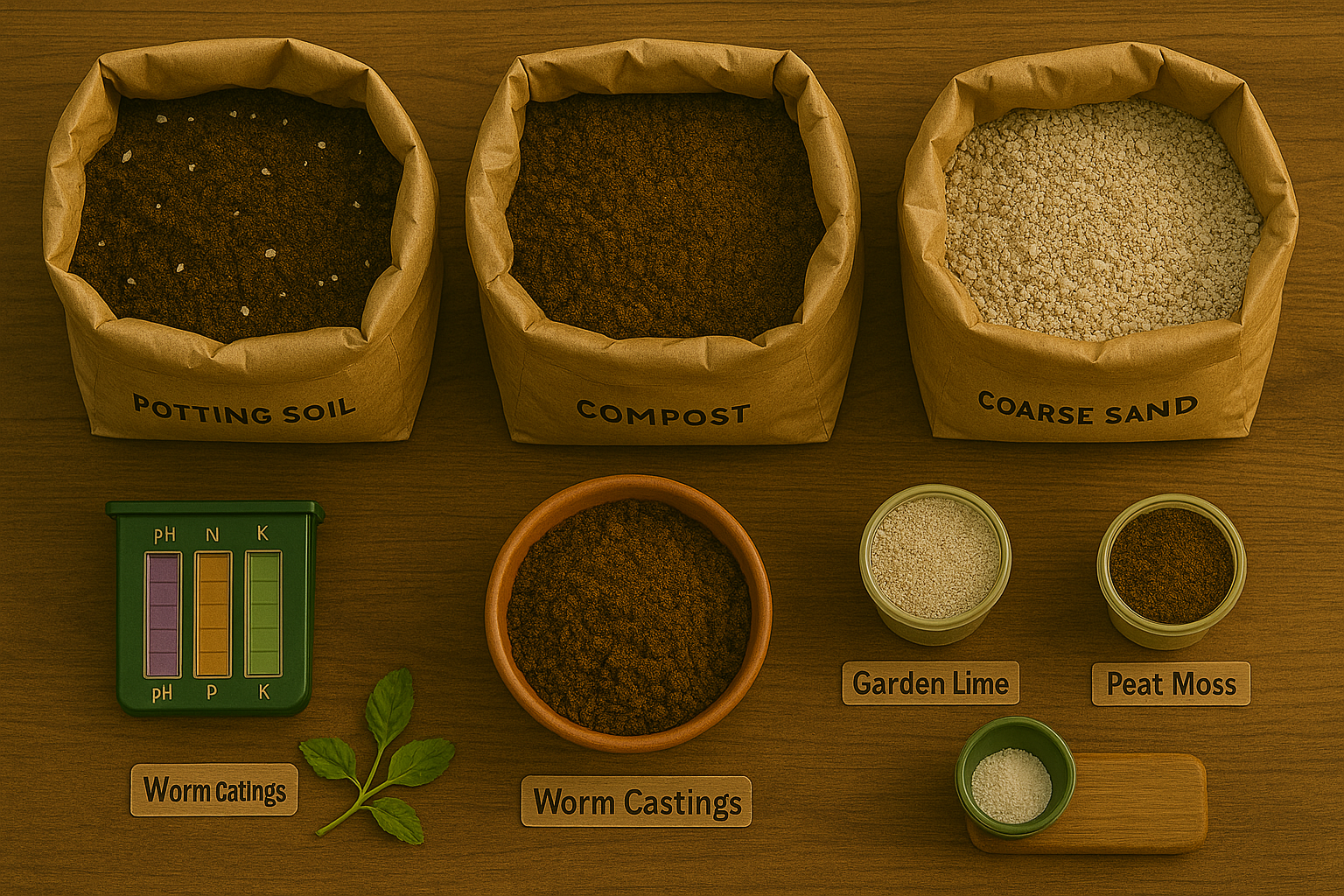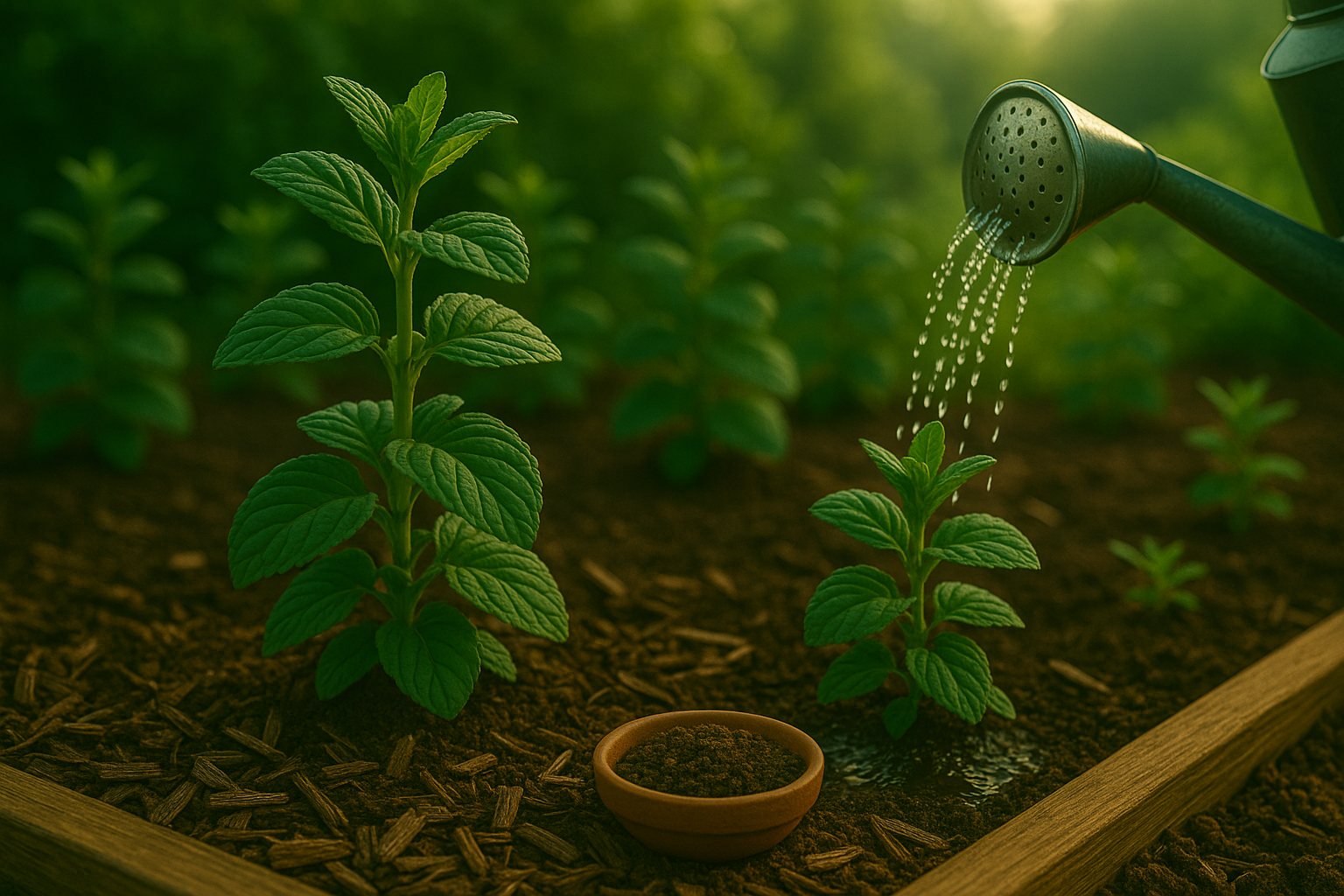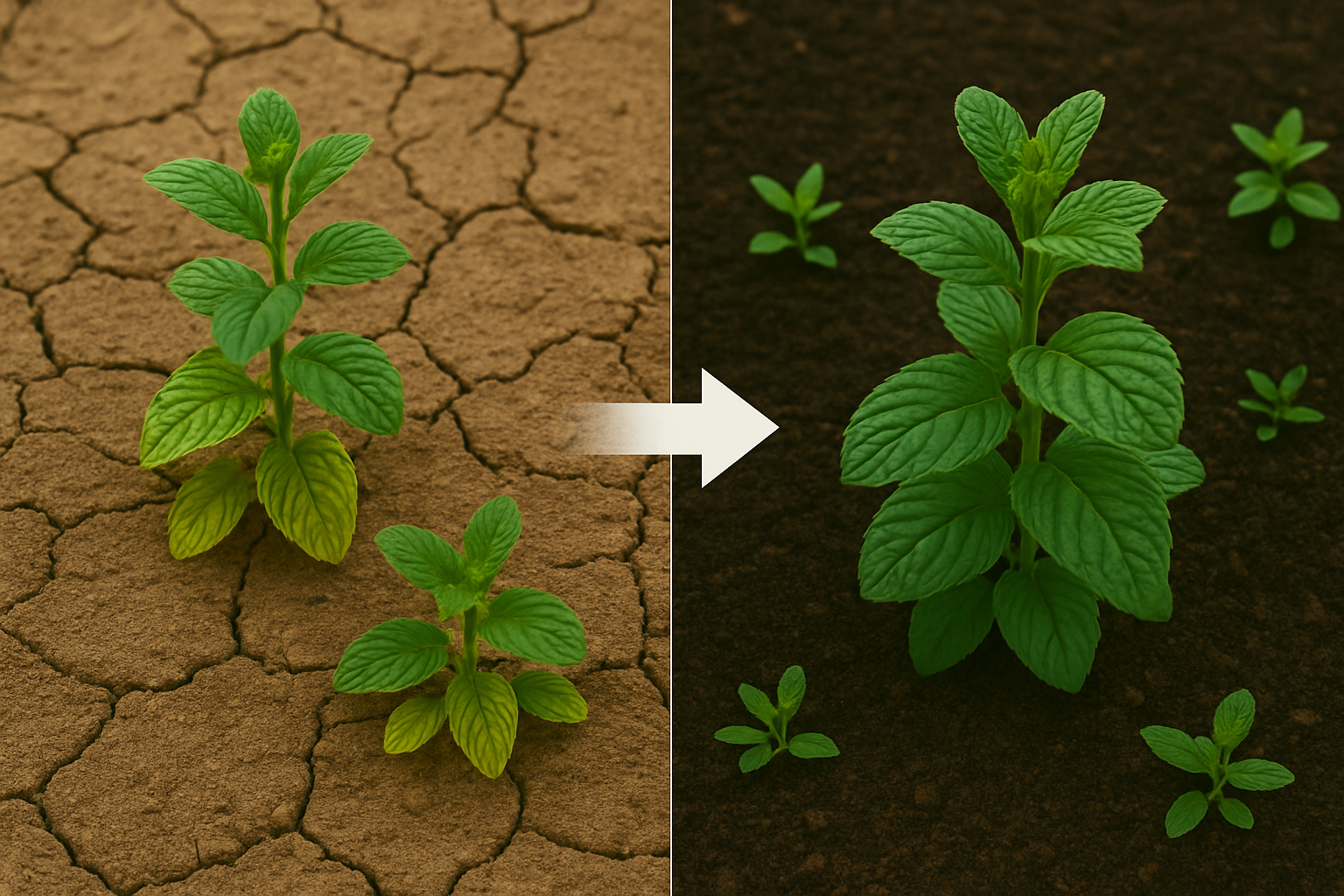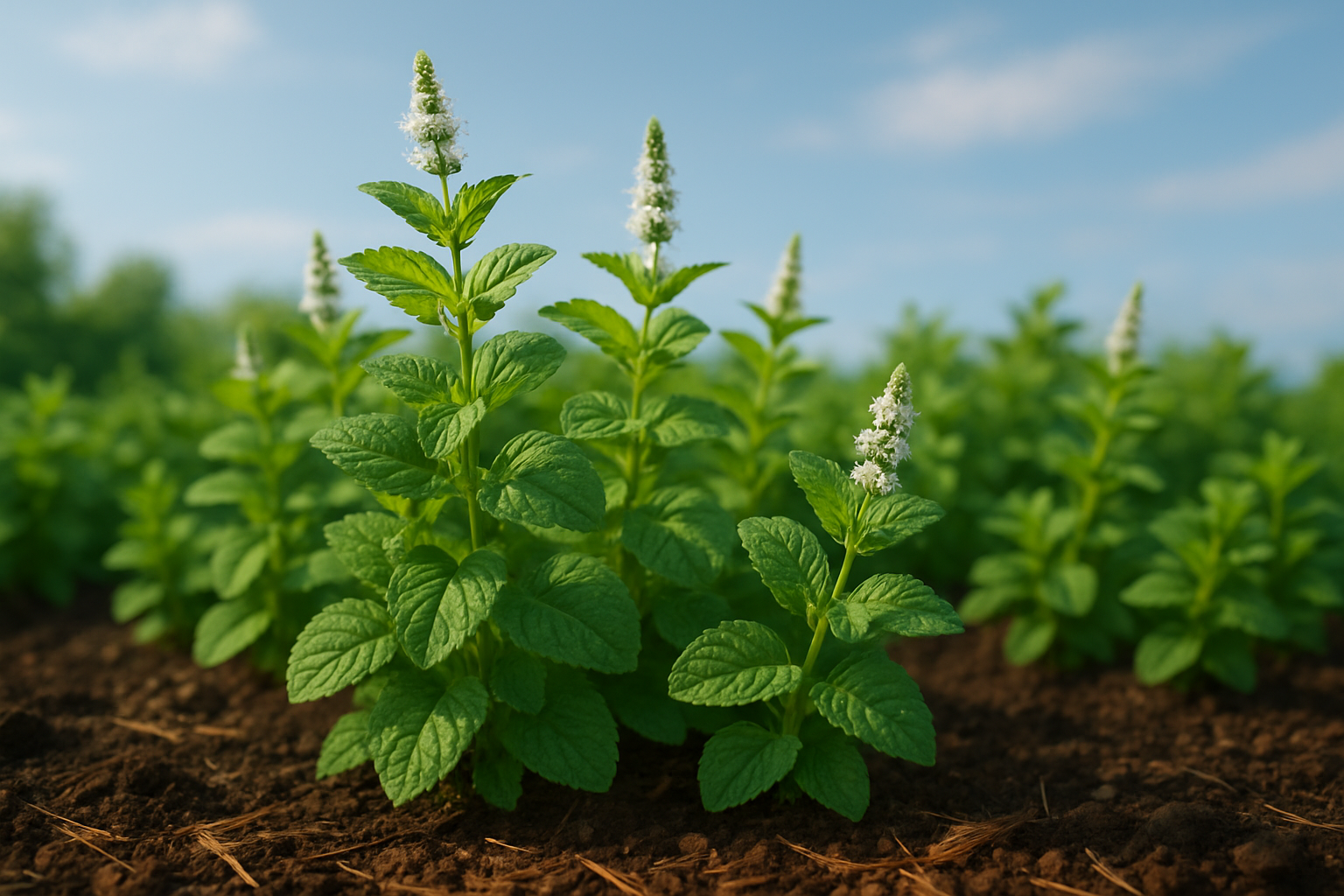Introduction
When it comes to cultivating thriving herbs, finding the best soil for mint is the first step toward a lush and aromatic harvest. Mint is celebrated for its hardiness and refreshing flavor, making it a favorite in home gardens and kitchens around the world. But even this vigorous grower benefits immensely from the right soil conditions. Soil quality doesn’t just influence how quickly mint spreads—it also affects the vibrancy of its leaves and the overall health of the plant. Poor or compacted soil can leave your mint waterlogged or starved of nutrients, while loose, well-draining soil encourages those signature fragrant leaves to flourish.
In this article, we’ll dive into why soil matters so much for mint, exploring the characteristics of the ideal soil mix and how simple amendments can make a world of difference. You’ll learn the basics of soil pH, drainage, and organic matter, and get plenty of practical tips—whether you’re planting in the ground or in containers. Plus, we’ll look at real-world examples to help you troubleshoot common problems and ensure your mint thrives all season long. Let’s dig into what makes the best soil for mint and unlock the secret to growing your healthiest, most flavorful plants yet.
Understanding Mint’s Growing Needs
Mint thrives best when it receives plenty of sunlight—ideally, around 4-6 hours of direct sun each day. Outdoors, choose a spot with morning sun and some afternoon shade, especially if you live in a hot climate, to prevent the leaves from scorching. Indoors, place your mint near a bright window; a south- or east-facing spot usually works well.
Besides light, moisture is key—mint craves consistently damp, but not soggy, soil. Too little water causes the leaves to wilt, while too much can lead to root rot, a common issue with mint.
Proper soil is the secret weapon here: look for a rich, well-draining mix with plenty of organic matter, like compost or peat moss. Outdoors, amend heavy clay soils with sand or compost to keep water from pooling at the roots. Indoors, choose a high-quality potting mix and a pot with drainage holes to prevent excess water from lingering.
Remember that indoor air dries out soil faster, so you may need to water more frequently. Always check that the top inch of soil is just barely moist, not sopping wet. These adjustments—offering bright light without overexposure, keeping soil consistently moist, and tailoring drainage to the environment—help your mint stay vigorous and resist problems like yellow leaves or root rot.
With a little attention to its growing needs, mint can flourish, whether you’re harvesting fresh sprigs from your garden or snipping leaves from a sunny kitchen windowsill.
Ideal Soil Characteristics for Mint
Mint thrives best in soil that strikes a careful balance between structure and chemistry. Aim for a soil pH between 6.0 and 7.0; this slightly acidic to neutral range allows mint roots to absorb nutrients efficiently and promotes optimal growth. The ideal soil texture is loose and well-draining—think loam or sandy loam. These soil types prevent water from pooling around mint’s shallow roots, reducing the risk of root rot, a common problem in heavy, compacted soils.
At the same time, mint prefers consistent moisture. To maintain this balance, you can add compost or well-rotted manure to boost water retention without compromising drainage. For gardeners working with clay soil, amending with coarse sand or perlite helps break up dense clumps and encourages better airflow, making the medium more hospitable for mint.
Avoid planting mint in heavy clay or poorly draining locations, as soggy roots quickly lead to poor plant health. On the other hand, extremely sandy soils may drain too quickly, leaving the plant thirsty—adding organic matter can bolster moisture retention in this case. For container growers, a high-quality, peat-based potting mix works well and makes monitoring soil moisture easier.
Ultimately, the goal is a crumbly, nutrient-rich soil that holds moisture long enough for roots to absorb it but dries somewhat between waterings. Testing your garden’s soil before planting mint can give you a better sense of its texture and pH; inexpensive kits are available at most garden centers. By making small adjustments based on your starting conditions, you can create the ideal foundation for mint’s signature lush, fragrant growth.
How to Prepare and Amend Soil for Mint

Getting your soil ready for mint is the secret to a thriving, fragrant crop, and it all starts with checking what you’ve got. First, test your soil’s pH using an inexpensive test kit from your local garden store—mint loves slightly acidic to neutral soil, somewhere between 6.0 and 7.0 on the pH scale.
If your soil is too acidic, sprinkle in some garden lime; if it’s too alkaline, mix in some peat moss or compost to bring it down. Next, check the drainage: dig a small hole about six inches deep, fill it with water, and see how long it takes to drain. Good mint soil should drain within an hour; if water pools or drains slowly, you need to boost drainage.
For clay-heavy or compacted soil, work in a few inches of coarse sand and plenty of compost or well-rotted manure—this not only lightens the texture but feeds hungry mint roots. For poor, sandy soils, increase water and nutrient retention by mixing in organic matter like leaf mold or coconut coir.
If you’re growing mint in pots or raised beds, blend your own ideal mint mix with this simple recipe:
- 2 parts high-quality potting soil
- 1 part compost
- 1 part coarse sand or perlite
For extra moisture retention and nutrition, toss in a handful of worm castings or leaf mold. Thoroughly mix the ingredients before planting, and avoid compacting the soil as mint sends out shallow, spreading roots.
Finally, mulch around your young mint plants with straw or shredded leaves to keep moisture in and weeds out. With these steps, your mint bed will be set up for healthy, vigorous growth—all ready for your first cup of homegrown mint tea.
Best Practices for Planting and Maintaining Mint in Soil

When planting mint in soil, give each plant plenty of room to spread by spacing them about 18 to 24 inches apart—this prevents overcrowding and promotes healthy airflow. Plant mint at the same depth as it was in its nursery pot, just covering the roots and leaving the stems above ground.
Applying a two- to three-inch layer of organic mulch, like shredded bark or straw, helps retain moisture, keeps roots cool, and suppresses weeds. Water your mint regularly, aiming to keep the soil evenly moist but not soggy—usually about 1 to 2 inches of water per week, adjusting for rainfall and heat. Early mornings are best for watering, as this gives leaves a chance to dry out and helps prevent fungal diseases.
When it comes to fertilizing, go easy—mint doesn’t need heavy feeding; a light application of compost in spring is plenty. Over-fertilizing can make the plant leggy and reduce flavor.
Mint is notorious for spreading aggressively, so containment is crucial. Try planting mint in a bottomless container buried in the ground or in a raised bed with sturdy borders to stop runners from overtaking your garden. Regularly trim back the stems and check for any escapees around the edges.
With these simple but effective strategies, you can enjoy fresh, aromatic mint without it taking over your landscape.
Common Soil Problems for Mint & How to Fix Them

Growing mint can be surprisingly tricky if your soil isn’t right. One common issue is compaction, where heavy, dense soil restricts root growth and water movement. To fix this, work coarse sand or organic matter like compost into the soil each spring to loosen things up.
Waterlogging happens when the soil doesn’t drain well, causing mint roots to rot. Address this by planting in raised beds or containers, or by adding perlite or bark chips to boost aeration.
Nutrient depletion is another problem, especially if mint has been growing in the same spot for several seasons. Refresh the soil with well-rotted manure or an all-purpose organic fertilizer in early spring and again midseason to maintain healthy growth. Rotate your mint patch every few years if possible, or at least mix in fresh compost between plantings.
Test your soil pH, too, as mint prefers slightly acidic to neutral soil (around 6.0-7.0). If needed, add lime to raise pH or sulfur to lower it.
By giving some attention to soil health before and during the growing season, you’ll set your mint plants up for lush, vigorous growth and a constant supply of fragrant leaves for your kitchen.
Conclusion & Quick Soil Tips Recap
Growing healthy, vibrant mint starts with the right soil: rich in organic matter, well-draining, and slightly acidic to neutral (pH 6.0–7.0). A loose, crumbly texture lets roots spread easily and prevents waterlogging, which mint hates. Compost or well-rotted manure boosts nutrients, keeping your mint lush and fragrant. Don’t forget to refresh soil each spring by mixing in organic material and checking drainage.
Here’s a quick recap to keep your mint thriving:
- Use a loose, well-draining potting mix
- Add compost for fertility and moisture retention
- Test soil pH and keep it between 6.0 and 7.0
- Avoid heavy, compacted soils that hold too much water
- Mulch to keep roots cool and conserve moisture
- Refresh and aerate soil yearly
Every garden is unique, so don’t be afraid to experiment with your soil blend and watch how your mint responds—adjust as needed, and your mint will thank you!
